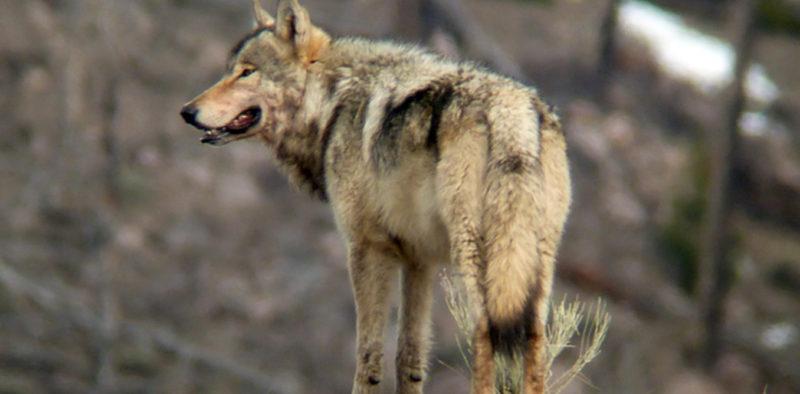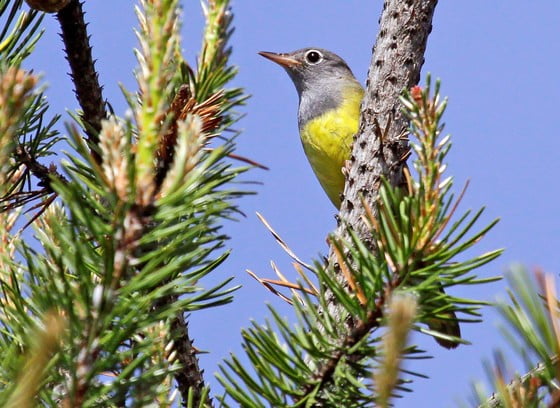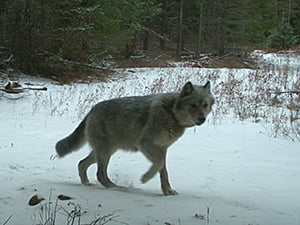
SALEM, Ore.—ODFW released its draft proposed Wolf Conservation and Management Plan today at www.odfw.com/wolves
The Fish and Wildlife Commission is expected to vote on the Plan at its June 7 meeting in Salem. Of course, they’ll be promptly sued mere nanoseconds afterward with conveniently pre-filled boilerplate briefs. Equally unimportant will be the fact those suits will be filed by groups that have never set foot in the state much less a Northwest forest.
Once adopted, the Plan will be the third edition of the Wolf Plan, which was first adopted in 2005 after an extensive, often ugly and protracted public process and revised under the same circumstances in 2010.
The proposed Draft Plan was written by staff but involved extensive meetings with stakeholders, out of state wildlife groups claiming to be stakeholders, and public comment at several prior Commission meetings. In 2018, the Commission also directed ODFW staff to host facilitated meetings with stakeholders to seek consensus on unresolved issues.
The facilitated meetings were an unmitigated failure that produced the last roundly rejected Oregon Wolf Plan draft. The facilitators, which had found consensus in some of the most heavily controversial environmental concerns in the world, couldn’t find anything approaching reason or a hint of compromise. The opponents were a no from the beginning and monopolized the meetings by screaming and shouting people down while claiming victimhood and oppression from political voices not even involved in the issue.
ODFW Hoping Yet Another Facilitated Wolf Plan Meeting Will Bring Consensus
When it became clear political posturing to avoid discussing factual matters wasn’t going to be brokered, the lead group, walked out. They also promptly filed suit. A handy and lucrative arrangement for some of the involved “stakeholders”. You see, they take donations to “defend wildlife”, but in reality, they are lawyers hiring themselves with money intended to protect wildlife. It may almost be easier for Theresa May to get a unanimous yes vote on her Brexit Deal before an uncontested Wolf Plan that doesn’t end in a selfish, protracted, and mean spirited legal battle.
The draft Plan incorporates ideas where consensus was reached, but agreement was not possible on all topics. Drawing and quartering of people who gave perceived mean looks in the direction of the gentle and kind canine creatures that totally wont rip your throat out if given half a chance, seemed a tad too strict for some. See a report on the facilitated meetings’ outcomes here.
“Wolf management is a polarizing topic with strong views on all sides, so it’s tough to find consensus,” says Derek Broman, ODFW carnivore and fur bearer program coordinator. “But regardless of people’s views on wolves, the wolf population in Oregon is growing in size, number of packs and packs reproducing, while expanding its range.”
Defining chronic depredation that might lead to lethal control of wolves and hunting of wolves are some of the most contentious issues. Advocates believe ranchers can go out and reason with these gentle creature in search of a meal before climate change ends all life as we know it in 12 years. Staff previously proposed the definition of chronic depredation be three confirmed depredations in a 12-month period in Phase 2 and 3, a change from the current definition (two confirmed depredations in an unlimited time frame).
Due to feedback from stakeholders at the facilitated meetings, the Draft Plan now proposes two confirmed depredations in nine months in Phases 2 and 3 (so the only change from the current definition is a 9-month time restriction). This change was agreed to after a delightful presentation in crayon about the nature of linear time to the assembled.
Like the original Plan, the Draft Plan would allow controlled take only in Phase 3 (currently eastern Oregon) in instances of recurring depredations or when wolves are a major cause of ungulate populations not meeting “established management objectives” or “herd management goals”. Wildly ambiguous terms for no guarantee a rancher will ever be allowed to stop hemorrhaging profits to satisfy people who don’t care if their way of life survives.
ODFW is not proposing any controlled take of wolves at this time, but believes regulated hunting and trapping needs to remain a tool available for wolf management. Any proposal for controlled take of wolves would require Commission approval through a separate planning and hunt development process. Any approval would be unlikely as the elected participants rely on the political donations of the Wolf Plan’s opponents. Can’t exactly piss on the hand that feeds your social climbing aspirations.
Other major topics addressed in Plan include:
- Wolf-livestock conflict, including an expanded section on the latest non-lethal tools and techniques for reducing conflict. ( “Now shoo mean doggie” sing-along and wolf kibble placement are among proposed ideas.)
- Wolf interactions with native ungulate populations, including annual ungulate population estimates before and after wolf establishment. Elk, wolves’ primary prey, have increased in some units with wolves and decreased in others. However, interpretation of the impact of wolf depredation on elk is confounded by management efforts to reduce elk numbers in units where they are over management objective or to minimize conflicts with elk on private land. Mule deer have been below desired levels for more than two decades, before wolves’ returned to Oregon, with changing land management strategies, invasive weeds, and recent severe weather among the main reasons for their decline.
- Wolf population monitoring and potential conservation threats.
- Strategies to address wolf-human interactions. (“Blame the victims” blitz in focus group testing. It works out well for the NPS when Yogi Bear gnaws little Timmy’s face off because he “startled” him. )

